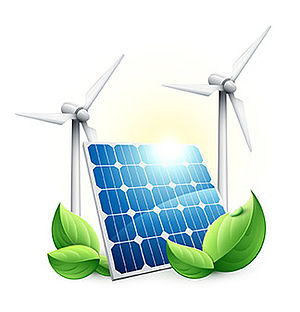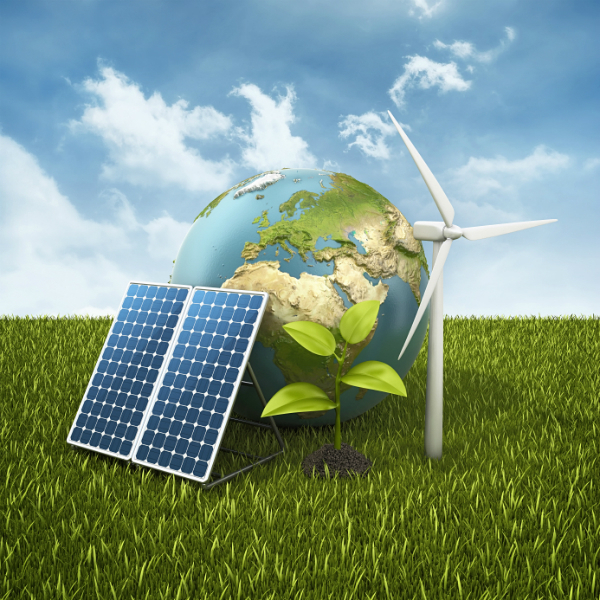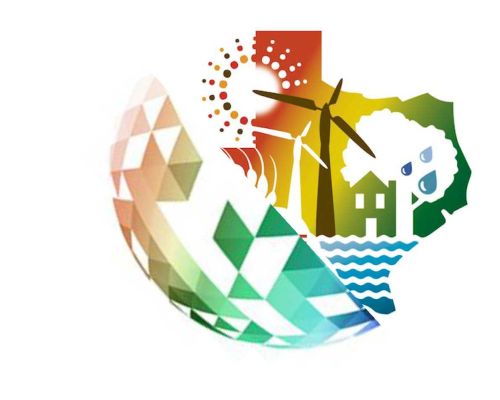Introduction to technological innovation of RES Brief knowledge of each RE technology 4 1.
- Solar Energy
- Wind Energy
- Water Energy

- Docente: salama abdelhady
- Docente: Mohammad Saeed Aboutrab
- Docente: Osama Abuzeid
- Docente: Moustafa Al Hazouri
- Docente: Firas Al Hinnawi
- Docente: Rasha Al-Beek
- Docente: Alaaldeen Al-Halhouli
- Docente: Ahmad Al-Qaisia
- Docente: Ahmed Al-Salaymeh
- Docente: Ali Alhadidi
- Docente: awos alsalman
- Docente: Mohammad Ayash
- Docente: loai dabbour
- Docente: Mohanad Halawani
- Docente: Mohammad Hamdan
- Docente: Martin Hauer
- Docente: Mohamad Khawaja
- Docente: DESIRE Teacher
- Docente: DESIRE Teacher
- Studente: Ayham A'Tiat
- Studente: Mohammad Abu-Naser
- Studente: Loiy Al-Ghussain
- Studente: hudefah Al-kashashneh
- Studente: Ronahi Al-kurdi
- Studente: Bassam Al-Qusous
- Studente: Mohammad Al-Safadi
- Studente: Shatha Albeik
- Studente: Mohammed Aleses
- Studente: mohammed alghrram
- Studente: Hesham Ali
- Studente: Ammar Alkhalidi
- Studente: Asma Alkhraibat
- Studente: Moustafa Almawaldi
- Studente: Vian Almusawi
- Studente: Hamza alnawafah
- Studente: Alaa Alquteimat
- Studente: Moussa ALSamara
- Studente: Jumana Alshawawreh
- Studente: Ameena Alshiekh
- Studente: hussein amer
- Studente: Ghassane ANIBA
- Studente: Heba Asaad
- Studente: Ali Ayoush
- Studente: Ahmad Azaizeh
- Studente: Razan Azzam
- Studente: Tareq Azzam
- Studente: mohammad basha
- Studente: Homam Dimashky
- Studente: Manuel Eising
- Studente: Eskandar Haddad
- Studente: Badia Haidar
- Studente: Mohammad Hammad
- Studente: Adel Juaidi
- Studente: mohannad khair
- Studente: George Konstantinou
- Studente: rayad kubaisi
- Studente: Maria Marques
- Studente: Farah Moghrabi
- Studente: Hani Muhsen
- Studente: Aziz Muhtaseb
- Studente: Boushra Nemaa
- Studente: nour nour
- Studente: Sarra qasim
- Studente: Mohannad Qawasmi
- Studente: Mohammed Radaideh
- Studente: Waseem Saeed
- Studente: Luigi SAIA
- Studente: Ismail Salim
- Studente: Abdullah Samiz
- Studente: Rana Saqqour
- Studente: Mohammed sayad
- Studente: shadi shadi
- Studente: Omran Shkair
- Studente: DESIRE Student
- Studente: New Student
- Studente: Ward Turkieh
- Studente: Tarek Tutunji
- Studente: Mustafa Walid
- Studente: محمد رابعه
Introduction to socio-economics
- ocioeconomics – the new approach
- Socioeconomics of renewable energy and energy efficiency
- Socioeconomic impacts: assessment and mitigation
Job creation, importance and impact on society
- Introduction
- Policy and practice background
- Impacts on Society
The transmission to Renewable Energy and
Energy Efficiency
- Energy market structures and stakeholders
- Energy system transition process
- Energy transition phase model
- Energy market transition experiences

- Docente: Osama Abuzeid
- Docente: Rasha Al-Beek
- Docente: Alaaldeen Al-Halhouli
- Docente: Ahmad Al-Qaisia
- Docente: Ahmed Al-Salaymeh
- Docente: Ali Alhadidi
- Docente: Mohammad Ayash
- Docente: loai dabbour
- Docente: Mohammad Hamdan
- Docente: Martin Hauer
- Docente: Mohamad Khawaja
- Docente: George Konstantinou
- Studente: Ayham A'Tiat
- Studente: salama abdelhady
- Studente: Rama abu-Alghanam
- Studente: Mohammad Abu-Naser
- Studente: Mohammad Affaneh
- Studente: Loiy Al-Ghussain
- Studente: hudefah Al-kashashneh
- Studente: Ronahi Al-kurdi
- Studente: Amjad Adel Alarab
- Studente: Mohammed Aleses
- Studente: mohammad Almasad
- Studente: Vian Almusawi
- Studente: Moussa ALSamara
- Studente: Mutasem ALZU'BI
- Studente: hussein amer
- Studente: Ali Ayoush
- Studente: mohammad babili
- Studente: mohamed eid
- Studente: Manuel Eising
- Studente: Mohamed Gaber Abbas Mohamed
- Studente: Eskandar Haddad
- Studente: Badia Haidar
- Studente: ahmed hamza
- Studente: Houssam Hassan
- Studente: Adel Juaidi
- Studente: ashraf kiwan
- Studente: Ghayth Kubaisi
- Studente: Farah Moghrabi
- Studente: Aziz Muhtaseb
- Studente: Iyad Muslih
- Studente: Waseem Saeed
- Studente: Ismail Salim
- Studente: Rana Saqqour
- Studente: Luai Shhab
- Studente: Omran Shkair
- Studente: DESIRE Student
- Studente: New Student
- Studente: Nassir Taha
- Studente: Mustafa Walid
The grid infrastructure plays a core role. Stable system operation with large amounts of intermittent RES-E generation is another major issue of practical relevance. 6 2.
Content
- The role of the grid infrastructure
- Challenges for RES-E developers § Challenges for grid operators
- ”Deep” versus ”shallow” versus ”super-shallow” RES-E integration
- Resume for policy making
- System operation and intermittent RES-E generation
- Promoting grid-related incentives for large-scale RES-E integration into the
different European electricity systems

- Docente: salama abdelhady
- Docente: Osama Abuzeid
- Docente: Rasha Al-Beek
- Docente: Alaaldeen Al-Halhouli
- Docente: Ahmad Al-Qaisia
- Docente: Ahmed Al-Salaymeh
- Docente: Ali Alhadidi
- Docente: loai dabbour
- Docente: Mohammad Hamdan
- Docente: Martin Hauer
- Docente: Mohamad Khawaja
- Studente: Ayham A'Tiat
- Studente: Waleed Abdelfadeel
- Studente: Mohammad Abu-Naser
- Studente: Loiy Al-Ghussain
- Studente: hudefah Al-kashashneh
- Studente: Ronahi Al-kurdi
- Studente: Hadeel Al-Majali
- Studente: Amjad Adel Alarab
- Studente: Mohammed Aleses
- Studente: Hesham Ali
- Studente: Baker Ali Alkhlaifat
- Studente: Asma Alkhraibat
- Studente: Vian Almusawi
- Studente: Moussa ALSamara
- Studente: Jumana Alshawawreh
- Studente: Alaa Alshubbak
- Studente: amani altmimi
- Studente: qais alyamani
- Studente: Ammar Awad
- Studente: Ali Ayoush
- Studente: mohamed eid
- Studente: Manuel Eising
- Studente: Aghareed H
- Studente: Badia Haidar
- Studente: Mohanad Halawani
- Studente: Adel Juaidi
- Studente: rachid lghoul
- Studente: Aziz Muhtaseb
- Studente: Mohammed Radaideh
- Studente: Ismail Salim
- Studente: Rana Saqqour
- Studente: Mustafa Walid
Global status of Renewable Energy technologies, investment flows and implementation Green Economy 5 1.
Content
- Introduction to the Green Economy.
- Climate change & Energy Transition.
- Sustainable (Millennium) development goals (SDGs).
- Renewable Energy Technologies effects.
- Socio- Economic benefits of the Renewable Energy.

- Docente: Osama Abuzeid
- Docente: Rasha Al-Beek
- Docente: Alaaldeen Al-Halhouli
- Docente: Ahmad Al-Qaisia
- Docente: Ahmed Al-Salaymeh
- Docente: Ali Alhadidi
- Docente: loai dabbour
- Docente: Mohammad Hamdan
- Docente: Martin Hauer
- Docente: Mohamad Khawaja
- Studente: Ayham A'Tiat
- Studente: salama abdelhady
- Studente: Mohammad Abu-Naser
- Studente: Amir Abulaish
- Studente: Loiy Al-Ghussain
- Studente: hudefah Al-kashashneh
- Studente: Rasha Albaik
- Studente: Mohammed Aleses
- Studente: mohammad Almasad
- Studente: Vian Almusawi
- Studente: Moussa ALSamara
- Studente: Jumana Alshawawreh
- Studente: amani altmimi
- Studente: Ammar Awad
- Studente: Ali Ayoush
- Studente: Manuel Eising
- Studente: Badia Haidar
- Studente: Hesham Hazaymah
- Studente: Adel Juaidi
- Studente: Aziz Muhtaseb
- Studente: Mohammed Radaideh
- Studente: Waseem Saeed
- Studente: Ismail Salim
- Studente: Rana Saqqour
- Studente: Omran Shkair
- Studente: Mustafa Walid
Existing environmental and public health indicators and Standards, which are adopted by a number of multilateral agencies, national governmental bodies and international nongovernmental organizations 4 1.
Content
- Definitions of Environmental Health Indicators and Benchmarks
- Human Rights Perspective: Public Policy Factors
- Screening Process and Applications
- Preventative and Remedial Indicators
- Primary, Secondary & Tertiary Indicators and Benchmarks
- Environmental Health Performance-Based Indices
- Structural and Process Indicators of Environmental Health

- Docente: Osama Abuzeid
- Docente: Rasha Al-Beek
- Docente: Alaaldeen Al-Halhouli
- Docente: Ahmad Al-Qaisia
- Docente: Ahmed Al-Salaymeh
- Docente: Ali Alhadidi
- Docente: loai dabbour
- Docente: Amal Dayoub
- Docente: Mohammad Hamdan
- Docente: Martin Hauer
- Docente: Mohamad Khawaja
- Studente: Ayham A'Tiat
- Studente: salama abdelhady
- Studente: Mohammad Abu-Naser
- Studente: Walid Aissa
- Studente: Loiy Al-Ghussain
- Studente: hudefah Al-kashashneh
- Studente: Jamal Alamri
- Studente: Moustafa Almawaldi
- Studente: Vian Almusawi
- Studente: Moussa ALSamara
- Studente: Moayad Alshareef
- Studente: amani altmimi
- Studente: hussein amer
- Studente: Ghassane ANIBA
- Studente: Ali Ayoush
- Studente: Manuel Eising
- Studente: Muna Hindiyeh
- Studente: Adel Juaidi
- Studente: Aziz Muhtaseb
- Studente: Boushra Nemaa
- Studente: Ismail Salim
- Studente: Mustafa Walid
The concept of environment: an overview
Environmental challenges: climate change and pollution
Environment-human relationship
Sustainable management of natural resources

- Docente: Osama Abuzeid
- Docente: Rasha Al-Beek
- Docente: Ahmad Al-Qaisia
- Docente: Ahmed Al-Salaymeh
- Docente: Ali Alhadidi
- Studente: Mohammad 94
- Studente: Ayham A'Tiat
- Studente: salama abdelhady
- Studente: Mohammad Abu-Naser
- Studente: Loiy Al-Ghussain
- Studente: Alaaldeen Al-Halhouli
- Studente: hudefah Al-kashashneh
- Studente: Ronahi Al-kurdi
- Studente: Hadeel Al-Majali
- Studente: Rasha Albaik
- Studente: Vian Almusawi
- Studente: Moussa ALSamara
- Studente: amani altmimi
- Studente: hussein amer
- Studente: Ali Ayoush
- Studente: loai dabbour
- Studente: Manuel Eising
- Studente: Badia Haidar
- Studente: Mohammad Hamdan
- Studente: Martin Hauer
- Studente: RANA HIJAZI
- Studente: Adel Juaidi
- Studente: Mohamad Khawaja
- Studente: Aziz Muhtaseb
- Studente: Ismail Salim
- Studente: Mohamed Shaban Eissa
- Studente: Ward Turkieh
- Studente: Mustafa Walid
Upon succesful completion of this course students should be able to understand:
- challenges resulting from carbon based economies;
- renewable energy technologies and their role with regard to socio-economic development;
- energy market structures and the role of different stakeholders;
- energy transition processes and theoretical concept of the Multi-Level-Approach;
- different phases of energy transitions that help to indentify road maps
- challenges faced in further countries that are already advanced in their energy
transition process and how they addressed challenges

- Docente: Osama Abuzeid
- Docente: Rasha Al-Beek
- Docente: Ahmad Al-Qaisia
- Docente: Ahmed Al-Salaymeh
- Docente: Ali Alhadidi
- Docente: loai dabbour
- Docente: Mohammad Hamdan
- Docente: Martin Hauer
- Studente: Ayham A'Tiat
- Studente: Mohammad Abu-Naser
- Studente: Moustafa Al Hazouri
- Studente: Loiy Al-Ghussain
- Studente: hudefah Al-kashashneh
- Studente: Asma Alkhraibat
- Studente: Adib Allahham
- Studente: Vian Almusawi
- Studente: Moussa ALSamara
- Studente: hussein amer
- Studente: Ammar Awad
- Studente: Ali Ayoush
- Studente: Abdullah Eial Awwad
- Studente: mohamed eid
- Studente: Manuel Eising
- Studente: Badia Haidar
- Studente: Adel Juaidi
- Studente: rachid lghoul
- Studente: Aziz Muhtaseb
- Studente: Mohannad Qawasmi
- Studente: Ismail Salim
- Studente: Rana Saqqour
- Studente: Mohamed Shaban Eissa
- Studente: Mustafa Walid
